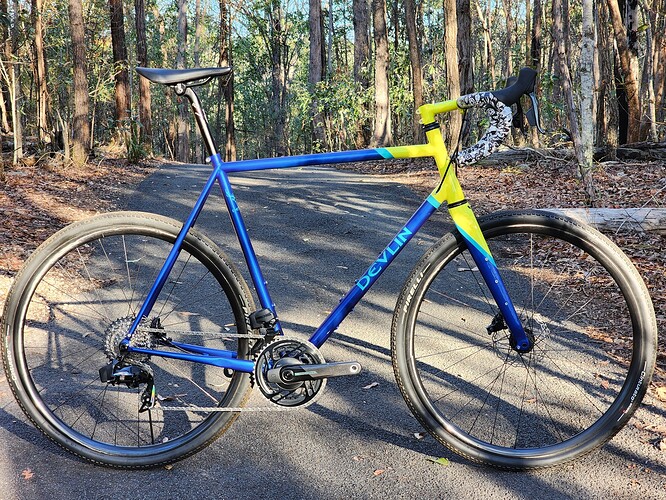What are everyone’s thoughts on using and/or designing around setback seat posts vs no setback? Pro, cons, useful in this situation, avoid in this situation. Thanks!
Generally I’ve used setback seatposts to ensure that the rider gets the proper saddle setback w/out having to compromise the STA and ensure that things look “correct.”
I just mocked something up:
74* STA + 20mm seat post setback = ~67mm saddle setback and a 10mm rear wheel gap
72.25* STA + 0mm seat post setback = ~68mm saddle setback and 2mm rear wheel gap.
I can achieve the same setback with this:
74* STA + move saddle back 16mm
But when I do that the saddle is mostly slammed backward and looks a bit weird to me.
That makes sense and pretty much follows how I’ve been thinking about it. I’m curious if anyone prioritizes a longer front center and aims for no setback so that the head tube moves out 20mm further.
I can’t speak much to MTB since I’m a super noooooob with that stuff but for road and gravel I would be guided by contact points and what the aim of the design is.
Eg if the bike is for a casually talented, aerodynamically curvaceous rider doing BWR or a grand fondo I’m not going to push them forwards and I’ll probably do a lot to make sure they’re more efficient/comfortable.
For road and gravel I always use a set back so seat tube center runs through center of saddle, but clamp is behind center on the rails where it supports the load on the rails better. The saddle goes where it needs to go for the best power position with an eye on the type of riding being set up for.
Part of my design philosophy is that you can always swap to a setback seatpost but as far as I know they don’t make set-forward posts so I’ll err on the side of a steeper seat tube angle. I hope dropper posts start getting setback options, that would be sweet for improving MTB fit!
I would design around a non-setback post because of the reasons Eva (@liberationfab) stated above, a lack of forward offset posts if the seat angle ends up feeling a bit too slack (fit can change over time) and a the fact that 99% of dropper posts are inline.
For anyone looking for a setback (or setforward) dropper 9point8 do a 25mm version each way of their Fall Line R post that’s received positive reviews.
A few things I consider:
- on MTB’s droppers are all zero offset, so I design around that
- on MTB’s people are used to the steep STA (74-75 sagged + zero offset seatpost)
- IMO road/gravel bikes look better with setback seatpost
- setback seat posts have more flex
- most people have switched to short-nosed saddles, which require 2-3cm more setback than traditional saddles
For road/gravel bikes, I design around Salsa18mm offset seatpost. It has really nice flex, is cheap, and has minimal branding:
https://www.salsacycles.com/gear/guide_seatpost
I agree, saddles look better slammed forward than back, so when in doubt, I tend to err on .5deg slacker
I try not to let the front center drive the seating position (STA and seatpost offset)
- determine the optimal saddle position for the style of riding and body mechanics (saddle height and setback)
- determine the cockpit (bar width, stem length)
- determine the steering geometry (HTA, Offset)
- the front center is what it is!
On smaller bikes make sure to check for toe overlap!
